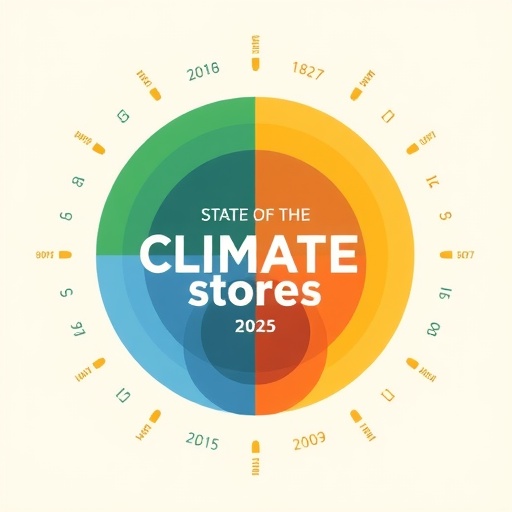22 of the planet’s 34 vital signs are at record levels, with many of them continuing to trend sharply in the wrong direction. This is the message of the sixth issue of the annual “State of the climate” report. The report was prepared by an international coalition with contribution from the Potsdam Institute for Climate Impact Research (PIK) and led by Oregon State University scientists. Published today in BioScience, it cites global data from the Intergovernmental Panel on Climate Change (IPCC) in proposing “high-impact” strategies.
“The last few years have seen vital signs breaking their records by extraordinary margins, like surface temperature, ocean heat content, sea ice loss and fire-related tree cover loss,” says PIK Director Johan Rockström, a co-author of the report. “The accelerating climate crisis presents a range of deeply interconnected risks to the planet’s essential operating systems – from critical tipping elements such as the ocean current system AMOC, to the integrity of Earth’s living biosphere, to the stability of global water resources. But our report also shows how this unprecedented threat to the Earth system – and society – can be mitigated.”
The authors note that 2024 was the hottest year on record and likely the hottest in at least the last 125,000 years. “Climate mitigation strategies are available, cost-effective and urgently needed, and we can still limit warming if we act boldly and quickly,” said William Ripple, professor at Oregon State University and co-lead author. “But the window is closing. Without effective strategies, we will rapidly encounter escalating risks that threaten to overwhelm systems of peace, governance, and public and ecosystem health.”
The research team reviews high-impact groups of actions involving strategies around different sectors, including energy, nature and the global food system:
Energy: Renewable energy sources such as solar and wind have the potential to supply up to 70 percent of global electricity by 2050, the report notes. A rapid phaseout of fossil fuels would yield one of the largest contributions to climate mitigation.
Ecosystems: Protecting and restoring ecosystems such as forests, wetlands, mangroves and peatlands could remove or avoid around 10 gigatonnes of carbon dioxide emissions per year by 2050, which is equivalent to roughly 25 percent of current annual emissions, while also supporting biodiversity and water security.
Food systems: Reducing food loss and waste, which currently accounts for roughly 8 to 10 percent of global greenhouse gas emissions, and shifting toward more plant-rich diets can substantially lower emissions. These strategies also promote human health and food security, according to the report.
The report warns that every fraction of a degree of avoided warming matters for human and ecological well-being. Small reductions in temperature rise can significantly reduce the risk from extreme weather, biodiversity loss, food and water insecurity as well as risks posed from crossing major tipping points. The authors emphasise that delaying action will lock in higher costs and more severe impacts, while swift, coordinated measures can yield immediate benefits for communities and ecosystems worldwide.
Journal
BioScience
Method of Research
Literature review
Subject of Research
Not applicable
Article Title
The 2025 state of the climate report: a planet on the brink
Article Publication Date
29-Oct-2025
Ulrich von Lampe
Potsdam Institute for Climate Impact Research (PIK)
press@pik-potsdam.de
Office: 03312882507
Journal
BioScience
Method of Research
Literature review
Subject of Research
Not applicable
Article Title
The 2025 state of the climate report: a planet on the brink
Article Publication Date
29-Oct-2025
Keywords
bu içeriği en az 2000 kelime olacak şekilde ve alt başlıklar ve madde içermiyecek şekilde ünlü bir science magazine için İngilizce olarak yeniden yaz. Teknik açıklamalar içersin ve viral olacak şekilde İngilizce yaz. Haber dışında başka bir şey içermesin. Haber içerisinde en az 12 paragraf ve her bir paragrafta da en az 50 kelime olsun. Cevapta sadece haber olsun. Ayrıca haberi yazdıktan sonra içerikten yararlanarak aşağıdaki başlıkların bilgisi var ise haberin altında doldur. Eğer yoksa bilgisi ilgili kısmı yazma.:
Subject of Research:
Article Title:
News Publication Date:
Web References:
References:
Image Credits:
Keywords




